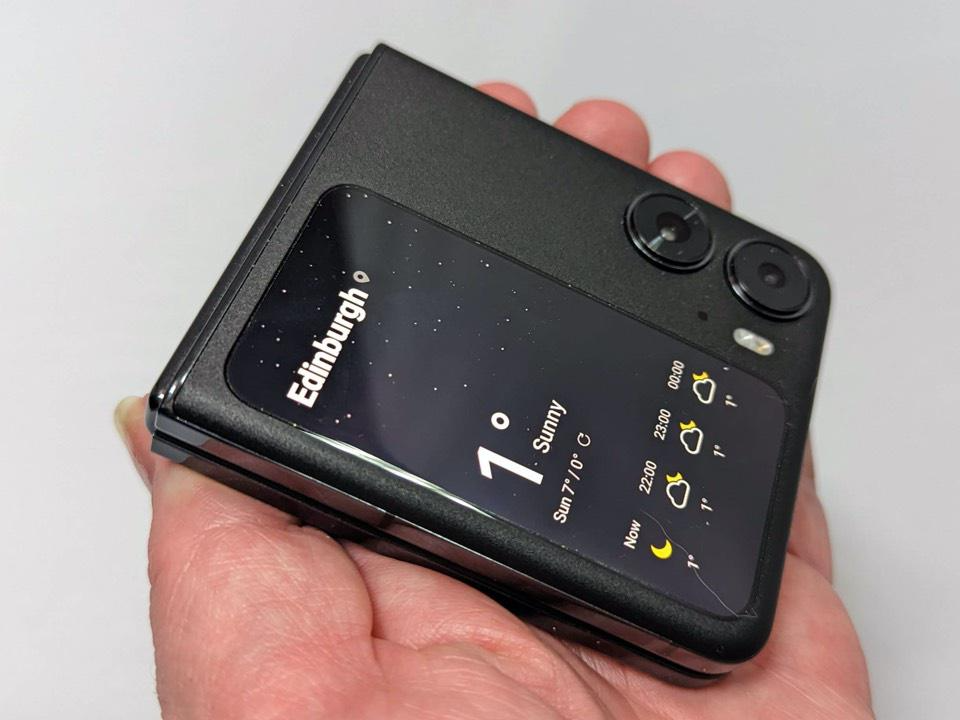Do You Really Want A Small Smartphone?
04 April, 2023

For those who dream of a small yet premium smartphone in 2023, the current portfolio of larger handsets across all price points suggests that the dream will remain just that. There are those who still champion the idea of a diminutive smartphone.
Eric Migicovsky, previously of the Pebble Smartwatch, and his team at SmallAndroidPhone.com lay out the state of play succinctly.
"It's increasingly clear that a small premium phone is not on any OEM roadmap. So I’ve decided to take matters into my own hands. My goal here is to rally other fans of small phones together and put pressure on Google/Samsung/anyone to consider making a small phone."
But is a full-blown miniaturization the way forward for 2023?
I've been a fan of smaller form factors for a long time. Given I spent a lot of time in the early days of smartphones such as the Nokia 7650’s 2.1 inch screen, the Nokia N95’s massive 2.6 inch screen, and many of Sony's Xperia Compact range; at first glance, the idea of an Android-powered competitor to the iPhone Mini should appeal to me. Nowadays, my eyes can’t cope with that, and they welcome the larger smartphone screens happily going beyond 6.5 inches. When you look at the wider smartphone market, there appears to be much more demand for larger-screened smartphones.
This does leave a space for a niche product to fill, but niche products in the smartphone space aren’t going to achieve the economies of scale that a major manufacturer can rely on to keep costs down. Thankfully, there is a better solution, and its a solution that is only going to be more affordable over the next few years.
The power users asking for a small smartphone tend to have a big list of needs; the performance should be the same, the same great battery life, and a premium experience. All of these, but also with a smaller screen and, therefore a smaller footprint. It’s a tough engineering ask with no guarantee of significant sales on the other side.
Even Apple, with its mighty velvet-lined garden and closed ecosystem, struggled, with the iPhone 13 Mini making up just three percent of US iPhone sales, with Apple quietly killing the ‘mini’ project. Where are the sales heading? To the larger and higher specced iPhone Pro models.
And this is where flip phones come in. The compromise of the smaller screen is no longer required, with a full-sized display inside the casing. Once folded out the flip phone becomes a pretty standard candybar phone - albeit one with the anatomy of a flexible screen across the middle and a touch less internal volume due to the hinge mechanism… but a standard phone nonetheless.
Once you fold the phone, you have a smaller and pocketable form factor. You have various implementations of cover screens to triage your messages and notification, as well as a larger main screen for normal smartphone work. You can also have high-end specifications and premium components, such as the camera, in the same package.
Samsung’s Z Flip series has been leading the charge in the form factor while providing premium specs, eg, the current Z Flip 4 shipped with the Snapdragon 8 Gen 1 system on chip. Oppo’s recent global release of the Find N2 Flip uses the Mediatek Dimensity 9000+, offering broadly similar performance. These manufacturers are early to the table, but they won’t be the first.
As more manufacturers introduce flip-styled phones, prices for displays will drop, more investment in technology for the screens and the hinges will be made, consumers will see more choices across brands, and more price points within manufacturers’ offerings, more devices means more addressable markets for developers...
Just like that, we have a small smartphone revolution. Unlike those small smartphones of yesteryear, they’ll have a full-sized display just a flip away.
Useful Links:
Source: www.forbes.com
TAG(s):
